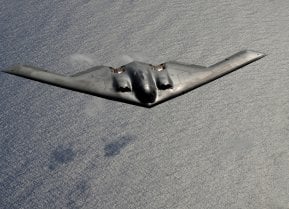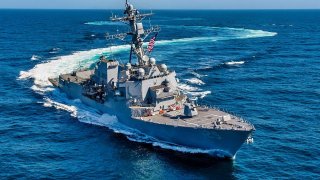Who Will Build the Next War-Winning Liberty Ship for America?
Congress and the Department of Defense, specifically the Navy, have drawn attention to our shipbuilding problem, but no one has proposed a modern Liberty Ship design. With war clouds gathering in Asia, time is in short supply. Such a design is needed to point the way to rebuilding the shipbuilding capacities that will be needed in the event conflict erupts.
Houthi assaults on shipping in the Red Sea have prompted Navy Secretary Carlos Del Toro to renew his call for a more robust American shipbuilding and shipping industry. As part of this message, Del Toro routinely stresses the importance of refueling and reloading warships at-sea.
The focus on logistics may lack glamor, but it is vitally important to national defense. It is a military axion that “amateurs discuss strategies, professionals discuss logistics.” History bears this out.
In World War One, the nation was caught with too few merchant ships and crews to sustain the economy or move troops and armaments to the frontlines.
To address the problem, Washington formed the federal Emergency Fleet Corporation By war’s end, it had built just 3,116 ships, only 378 of them with steel hulls. Those ships’ limited numbers and usefulness sorely strained the Army’s ability to sustain 80 divisions in Europe and, later, bring them home in timely fashion.
With war brewing again in 1936, Congress and the President realized that a repeat of that performance would be disastrous. Memories were still vivid of the much maligned wooden (and even concrete) ships produced frantically, tardily and uneconomically by the EFC during the First World War.
Congress therefore moved to avoid a repeat of the last war’s shipping woes by enacting the 1036 Merchant Marine Act. Enter, the Liberty Ship, born of a simple design that could be built in modules at dispersed factories and then rapidly fabricated at shipyards. Eventually the design was modified to accommodate a variety of commercial shipping, troop and supply movements and even amphibious assaults. By war’s end, more than 2,700 Liberty Ships had been build.
The entire Liberty Ship project required foresight and leadership from Washington. Regaining the workforce and infrastructure needed to pull off the war-winning build rate of these ships, also required leadership, as well as the manufacturing capacity leftover from the First World War. Sadly, today we have too little leadership and no latent capacity.
Today, war is underway in Europe and the Middle East. China’s increasingly belligerent actions throughout the South China Sea and North Korea’s bullying threats raise the specter of war in the Asian theater. Yet America now has assured access to fewer than 200 commercially viable ships, and our domestic shipbuilding industry has insufficient capacity to put out even 20 ships a year, This leaves our nation in dangerous straits.
Maritime leadership is urgently needed. The Secretary of the Navy has drawn attention to this problem, but he can’t fix it alone. Leadership from the Secretary of Transposition, Secretary of Homeland Security, Secretary of Commerce and, most critically, the President is essential.
Without adequate and assured shipping, our economy is at risk of being held hostage by hostile powers. Top of the list is China, which controls almost 100 major ports along critical shipping lanes and a massive shipping fleet. Beijing can also exert control over others’ shipping and ports through economic coercion. Though the danger have been evident since at least 2004, meaningful action has been absent.
How should we proceed? As in 1936, a good recovery plan begins with a simple ship design that can be built at home with a domestic workforce and industrial capacity that all can be ramped up quickly. With such a design in hand, knowing how to increase production and modify the model for wartime use becomes possible. Unfortunately, it isn’t clear anyone is responsible in government for this design, which would be militarily and commercially useful.
Congress and the Department of Defense, specifically the Navy, have drawn attention to our shipbuilding problem, but no one has proposed a modern Liberty Ship design. With war clouds gathering in Asia, time is in short supply. Such a design is needed to point the way to rebuilding the shipbuilding capacities that will be needed in the event conflict erupts.
About the Author: Brent D. Sadler
Brent D. Sadler, a 26-year veteran nuclear submarine and foreign area officer, is a Senior Research Fellow at The Heritage Foundation covering naval warfare and advanced technologies.
Image Credit: Creative Commons.


